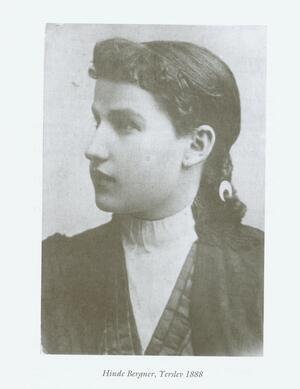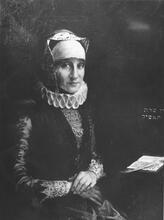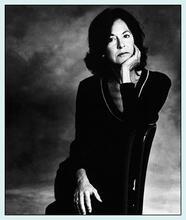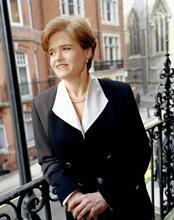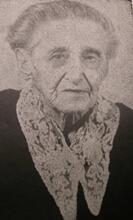Hinde Bergner
Hinde Bergner, born into a Hasidic family in 1870, was the matriarch of one of secular Jewish culture’s most accomplished artistic families, along with writing her own memoir that stands as an invaluable document about Jewish life told from a women’s perspective. Her memoir describes her life in a traditional Jewish family on the edge of modernity. She reflects on important aspects of her community, including marriage customs, education of girls, the spiritual life of Jewish women, generation tensions, and more. Her mature perspective shows a respectful appreciation for a way of life on the cusp of annihilation.
Though not a published writer in her time, Hinde Bergner holds a special place in Yiddish literature by virtue of the fact that her memoir of family life in a late nineteenth century Galician (Yiddish) Small-town Jewish community in Eastern Europe.shtetl is one of few extant Yiddish memoirs to describe the traditional Jewish family on the edge of modernity told from the perspective of a woman. Her intimate portrayal of matchmaking and marriage customs, the education of girls, Jewish occupations, information about period clothing and home furnishing, the spiritual life of Jewish women, generational tensions, and cross-cultural contacts results in a valuable document of Jewish social, family, and women’s history.
Early Life
Hinde (Rosenblatt) Bergner was born on October 10, 1870 in Redim (Radymno), Galicia, a market town on the river San, then part of the Austro-Hungarian Empire. She was one of six children of Joseph and Bluma (Frayfeld) Rosenblatt. Hinde’s father owned a local granary. She describes how she felt caught between her family’s expectations that she assist her father in keeping track of grain production and shipments, and later the company’s accounts, and her own desire for a European education. Though Hinde was raised in a Hasidic home, she credits her father with having been more open to modern innovations and secular influences than her mother. Though her mother considered non-Jewish literature heretical, it was her father who hired a series of teachers at Hinde’s insistence to teach her German, Polish, and other secular subjects. Hinde describes her mother reverentially as a model of strict female Jewish piety who cared for the town’s poor irregardless of religious affiliation and who, on the eve of her death, insisted on getting out of bed to kindle and bless the Sabbath candles. This parental model that balanced a willingness to satisfy the intellectual ambitions of a daughter with strict adherence to tradition was representative of broader societal tensions affecting an entire generation of eastern European Jewish youth.
Marriage and Children
Though her parents first started interviewing potential marriage partners for Hinde when she was only eleven, she did not marry Efrayim Bergner until the fall of 1891. Hinde and Efrayim Bergner had three sons, all of whom left their parents behind in Redim to pursue their artistic ambitions. Moyshe, born in 1892, immigrated to Palestine where he changed his last name to Harari, attended the Bezalel art school, and committed suicide at the age of twenty-one. Zecharie, born in 1893, moved to Warsaw, where he changed his name to Melech Ravitch. He was a co-founder of the most prestigious Yiddish literary journal in Poland, Literarishe bleter, and served as secretary of the Yiddish Writers’ Union. Ravitch went on to a career as one of the most important Yiddish poets and essayists of the twentieth century. Hinde’s youngest son, Herts, was born in 1907. He was also a writer of Yiddish prose who immigrated to Australia prior to World War II. Hinde’s grandson Yosl Bergner (b. 1920), the son of Melech Ravitch, became one of Israel’s most important modernist painters. In their respective memoirs, both Melech Ravitch (d. 1976) and Yosl Bergner remember Hinde as an accomplished raconteur and amateur sketch artist. As the matriarch of one of secular Jewish culture’s most accomplished artistic families, they credit her as having been a powerful creative influence in their youth.
Though Hinde Bergner’s children felt the pull of the modern metropolis, she and Efrayim remained in Redim for most of their lives. They lived in a two-story stone house, one of the largest in town. Despite their material comfort, Efrayim was forced to try his hand at a variety of different businesses (liquor distillation, grain production, typesetting) in order to remain financially solvent. During World War I, the family spent three years in Vienna as refugees. After the death of her husband in 1939, Hinde was left alone to confront the German threat. She fled across the border to the Soviet Union in late 1939. After the German attack on the Soviet Union in 1941, her fate grew desperate. In her last plea to her sons for help, delivered through the Red Cross, she writes: “I am very weak … it will soon be too late.” She is believed to have died in the German extermination camp of Belzec in 1942.
Writing of Bergner's Memoir
Hinde Bergner first began writing her family memoir in 1937 at the encouragement of her sons, who believed that it would help to relieve her loneliness. They had often found her handwritten notes and poems hidden in books, leading them to believe that their mother harbored literary ambitions. What they could not have imagined was just how engaged Hinde would become with the project. Over the next year and a half, she regularly mailed her sons handwritten copies of her memoir’s newest installments. Her letters grew increasingly joyful as she told her sons how their father cut long pieces of paper for her “exactly like those used for real literary manuscripts.” Near the end of the memoir, we discover two different versions of the same events, an indication that Hinde began revising her prose to produce the most polished narrative possible. Even in the dark days of 1941, Hinde wrote to her sons that she was eager to return to her writing: “I feel that I will be able to write much more now because I have come to understand humanity.” Regretfully, she never managed to pick up where she left off in 1939, and the memoir ends in mid-sentence—symbolic of both her own fate that of eastern European Jewry as a whole.
Hinde Bergner could never have imagined that her memoir would be published. Like Glückl of Hameln—perhaps the most important woman memoirist in all of Yiddish literature—the document is an intimate work written by a Jewish mother for her children, and also a form of personal therapy: “On long winter nights, I often sit alone beside the oven. My thoughts stray far away to my children and grandchildren who are spread out over this wide world. I long to be close to them, to tell them about my childhood which hovers so vividly before my eyes, as if I was once again a child.”
Themes in Bergner's Writing
Like the memoirs of Glückl, Hinde’s text sketches a community that was in rapid cultural and economic transition. Hinde’s family was part of a blossoming Jewish middle-class which suffered a series of economic successes and setbacks. She describes how easily her brother Neta abandoned his Hasidic garb when encouraged by his new wife to look more European, and she reveals her own anxieties about how an early marriage would put an end to her ambitions for personal and intellectual development: “I imagined my husband having a beard and long side-curls while I wore a wig instead of my beautiful long, blond braids. Wringing my hands, I mourned the loss of my dreams and my ambition to acquire more education so that I would surpass all my girlfriends.” The memoir is filled with humorous details about potential matches, matchmakers, and her wedding celebration, in addition to sensitive musings about the expectations placed upon newly married women by traditional society. For instance, Hinde’s wedding night is portrayed as a moment of embarrassment, having only met Efrayim three times prior to their union. Details about the shearing of her hair, and the ceremony of being led to synagogue as a bride by the women of the shtetl add to the text’s ambivalent tone. In other places, however, Hinde seems saddened by the rapid abandonment of tradition. For instance, when she and Efrayim visit a family friend in the Belz region on a Jewish fast-day, she is confused by his ability to lead an outwardly pious life while transgressing Jewish law in the privacy of his own home: “We were invited into his home, one in which the windows faced out onto the street. It was noon. They closed the curtains, began to set the table, and invited us to eat. I was flabbergasted that in such a city where Rebbes had lived for generations such a thing could happen.”
A great deal of the memoir is also given to details about her thirst for education. When she was still a young girl, Hinde stole away to Yerslav (Jaroslaw) to stay with an aunt when she thought her parents would prohibit her from continuing her education. Her descriptions of her teachers and private tutors range from mockery to admiration, depending on the teacher’s degree of worldliness. As resident of a multi-national region, Hinde was literate in Yiddish, Polish, and German (her grandson Yosl recalls her speaking a highly Germanized dialect of Yiddish.) Her love of secular literature, the theater and piano, her desire to learn French, and her insistence that she be called Henrietta for a time, all signal the enticements of modern European culture for the youth of her generation. However, in contrast to many maskilic memoirs by young men about this period, which are highly critical of Jewish religious civilization, Hinde’s more mature perspective endows the memoir with a tender and respectful appreciation for a way of life on the cusp of annihilation.
After the war, Hinde’s sons decided to privately publish the memoir in a limited tirage as a monument to their mother. Melech Ravitch edited the memoir, cutting a number of paragraphs in order to protect the reputations of surviving family members and the memory of the murdered; these excisions (restored in the forthcoming English translation) are regrettable since they show Hinde as both a sharp critic of character and a juicy chronicler of family mischief. Despite her sons’ misguided opinion in their introduction to the work that it contains “no social or scientific value,” Hinde Bergner’s memoir stands alongside those of Glückl of Hameln, Pauline Wengeroff, Puah Rakowsky, and other Jewish women who turned to writing to make sense of their own lives in a time of rapidly shifting cultural landscapes and expectations.
Work by Hinde Bergner
In di lange vinternekht: mishpokhe zikhroynes (Yiddish). Montreal: 1946; Hebrew translation, 1982; German translation, 1995; English translation: On Long Winter Nights: Memoirs of a Jewish Family in a Galician Township, 1870–1900. 2005.
“Bergner, Hinde.” Lexicon of Modern Yiddish Literature. (Yiddish) New York: CYCO, 1956.
Bergner, Yosl. What I Meant to Say. Or Yehuda: Hed Arzi Book Publishing, 1997.
Hyman, Paula. Gender and Assimilation in Modern Jewish History. Seattle: University of Washington Press, 1995.
Hyman, Paula. “East European Jewish Women in an Age of Transition.” In Jewish Women in Historical Perspective, edited by Judith Baskin. Detroit: Wayne State University Press, 1998.
Niger, Shmuel. “Hinde Bergner: Mother of an Artistic Family” (Yiddish). Der tog. New York: March 2, 1947: 3.

